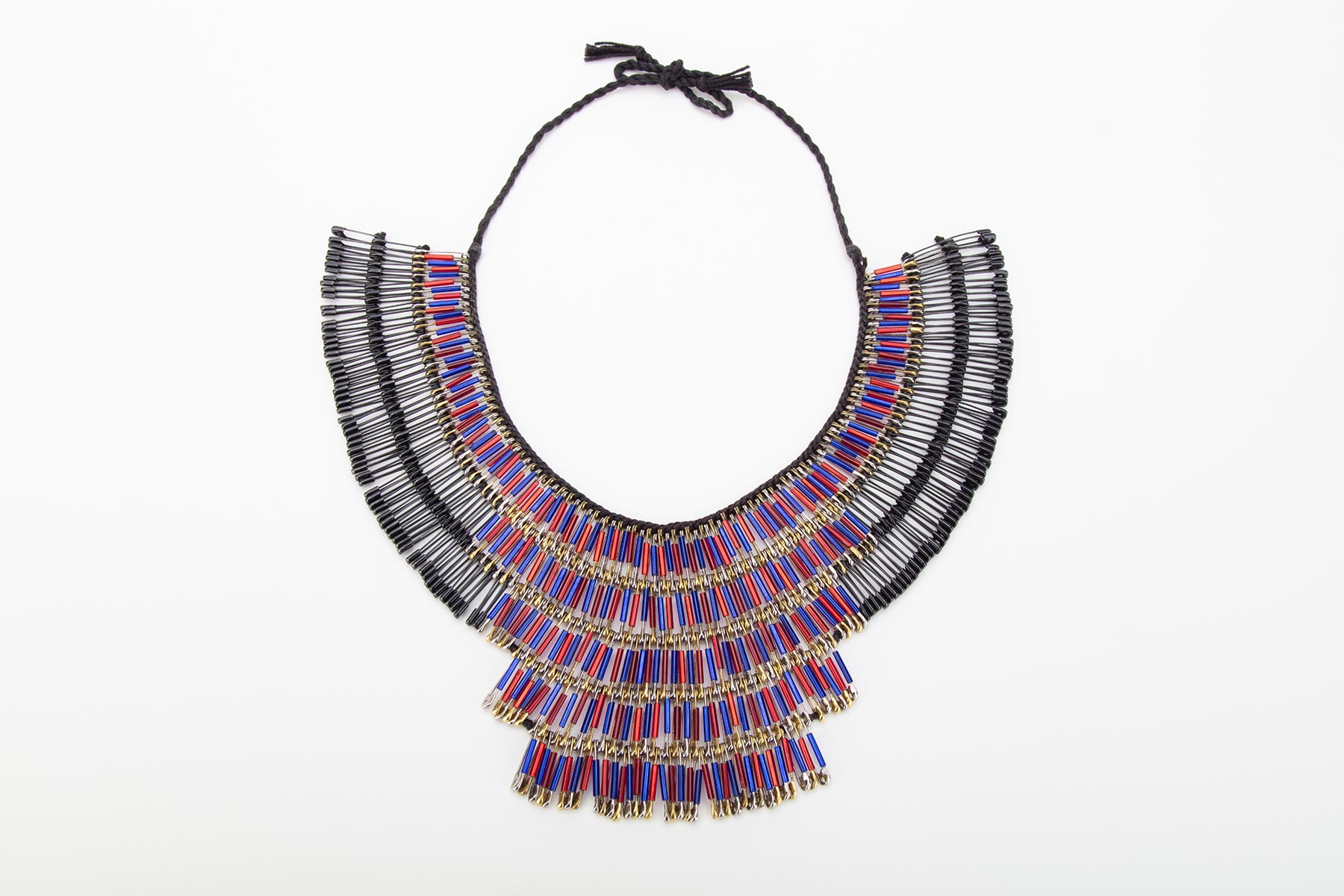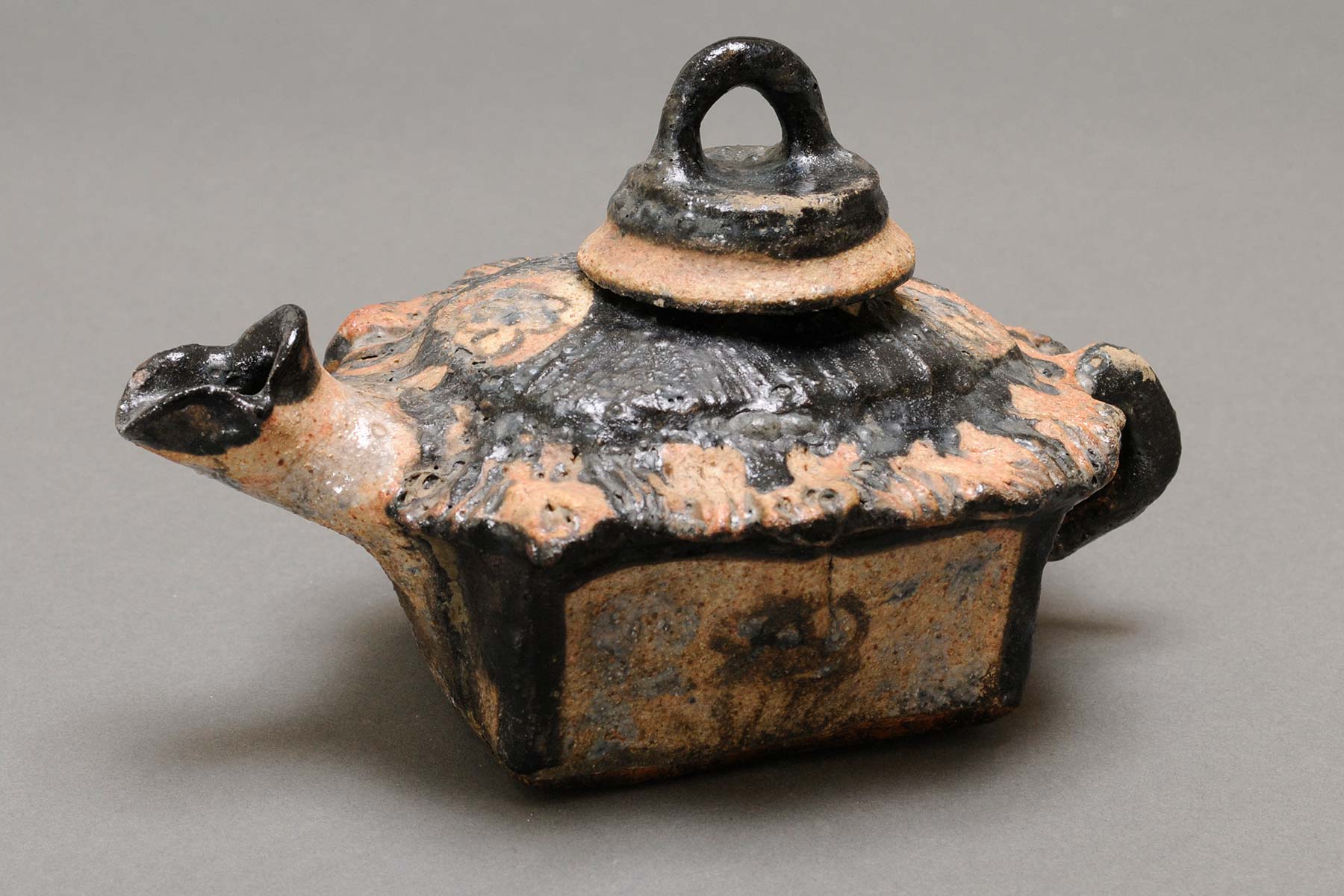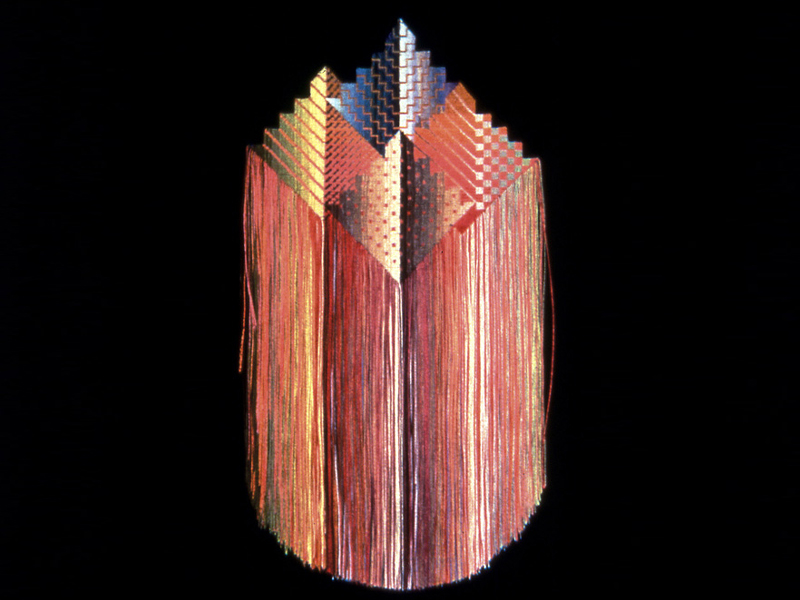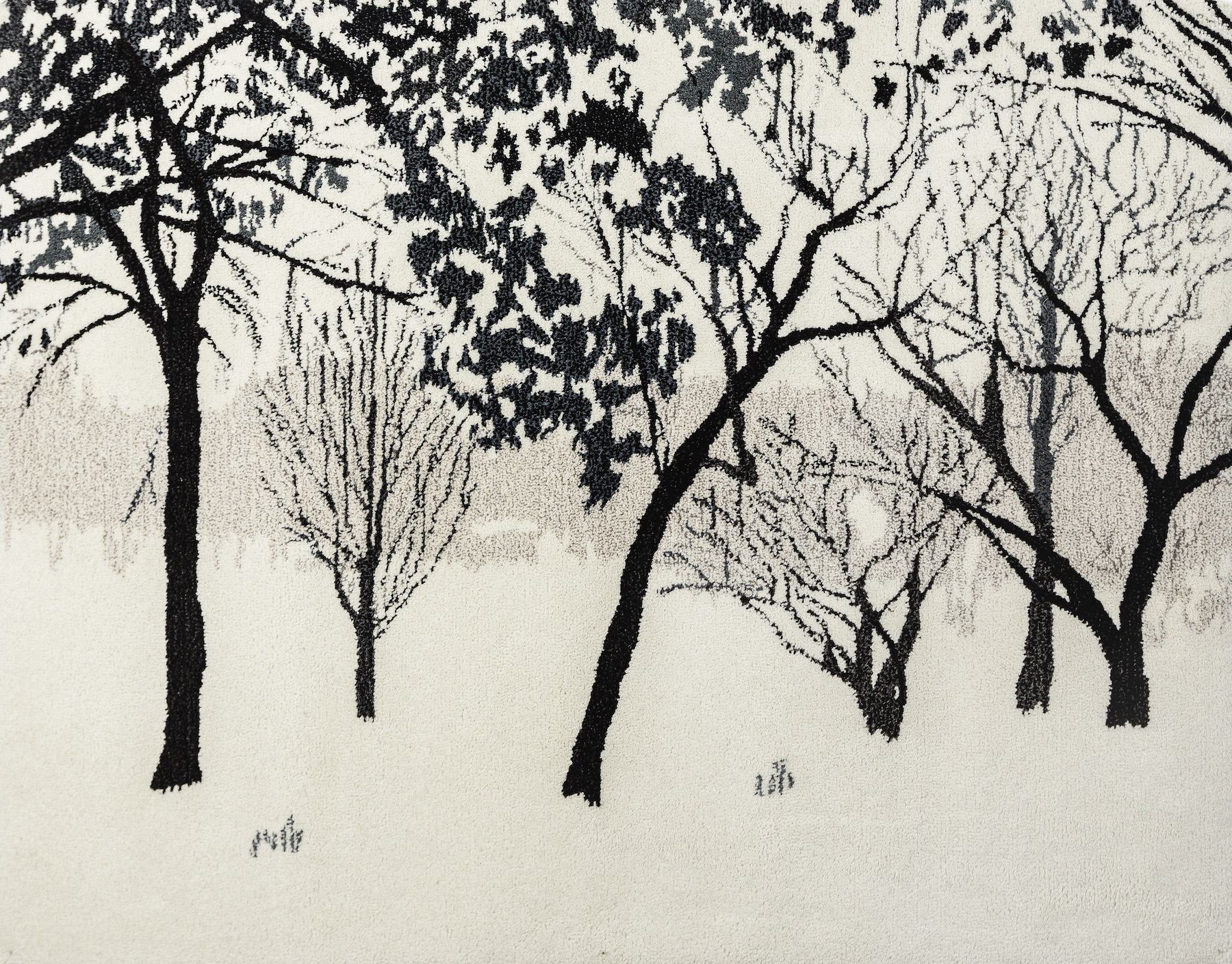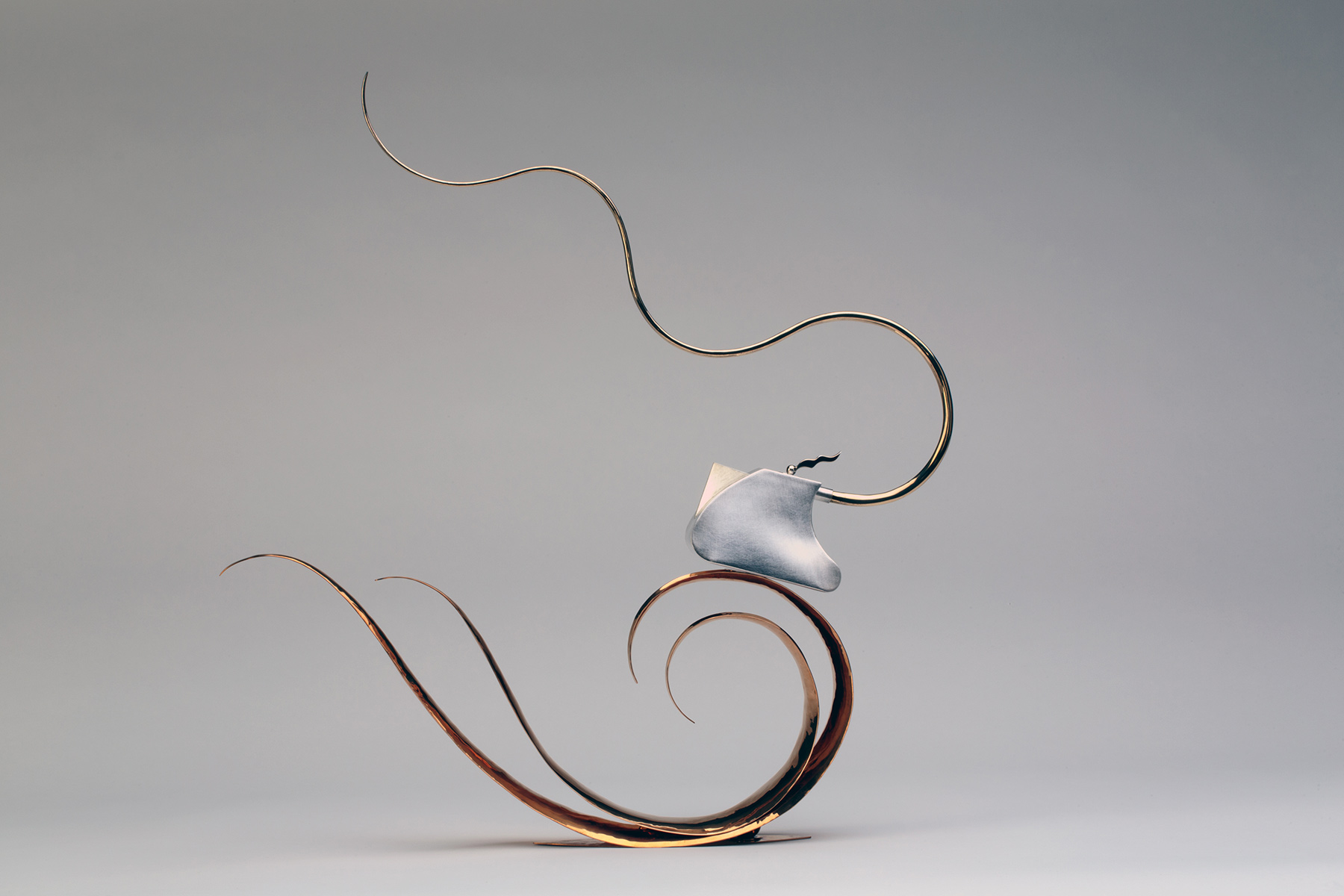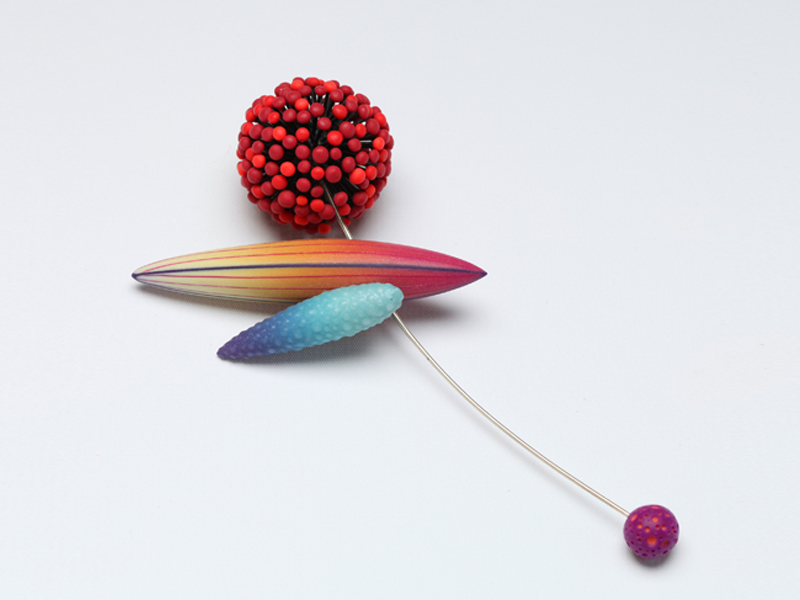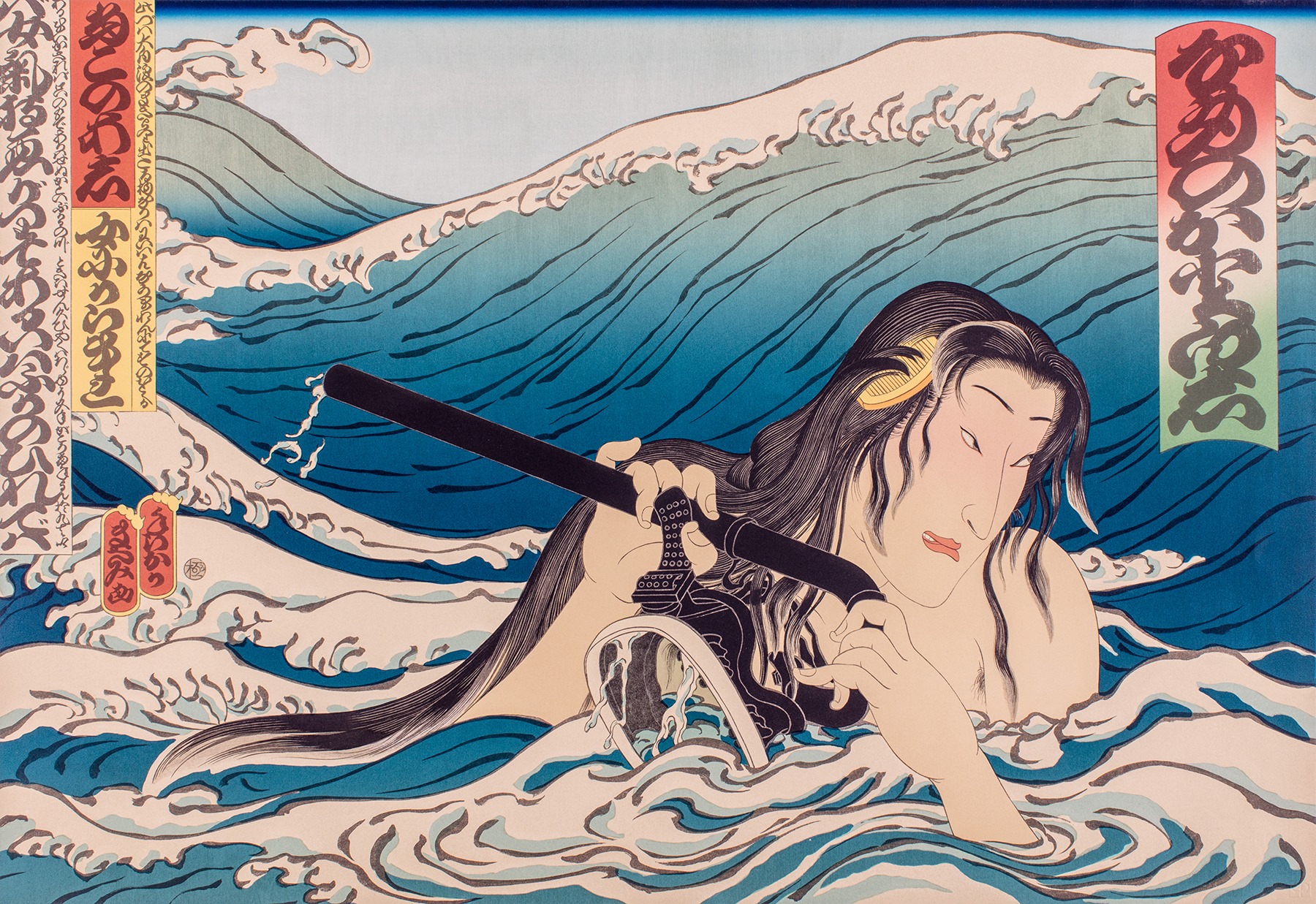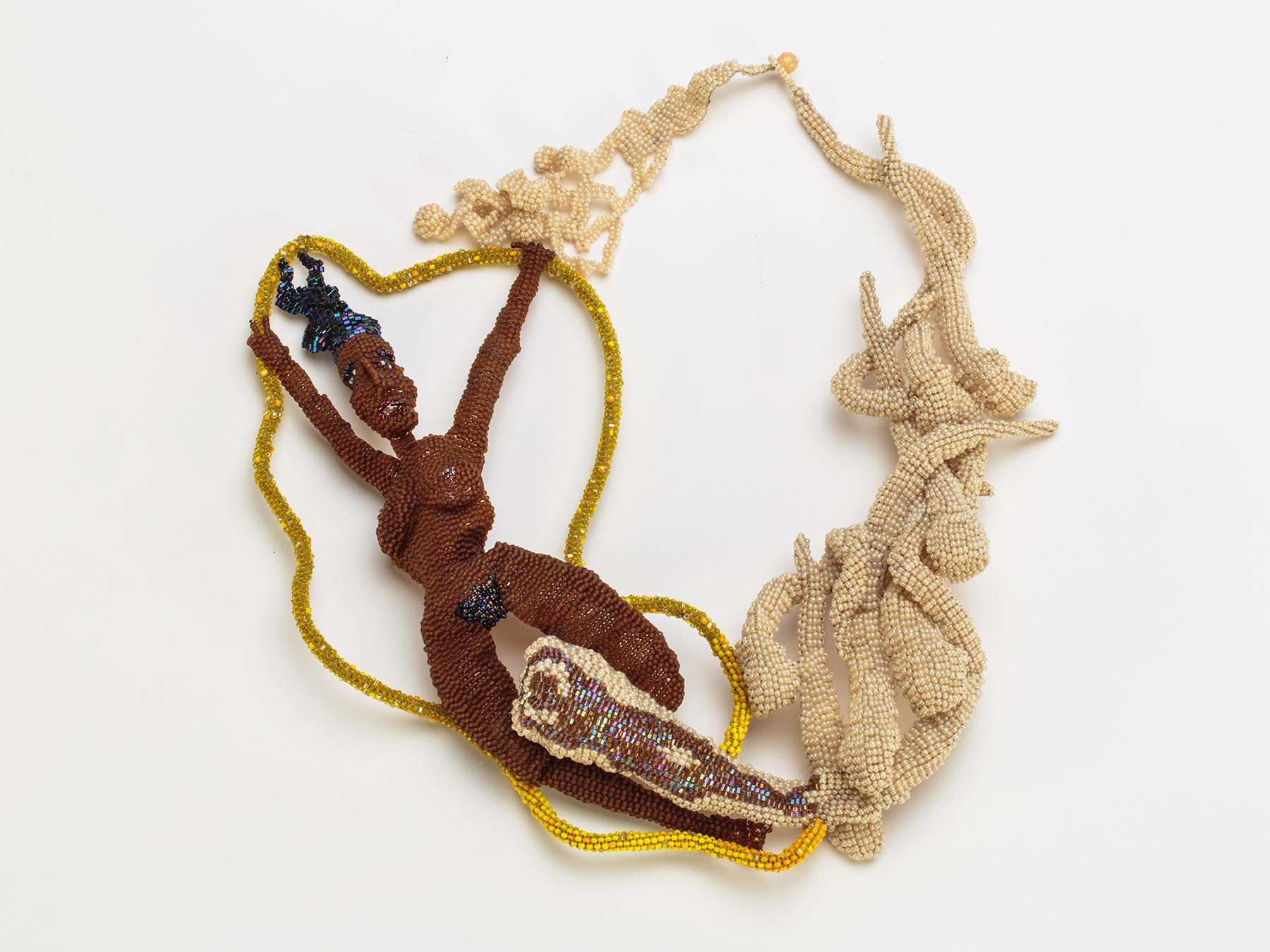
Permanent Collection
The Racine Art Museum has the largest contemporary craft collection in the United States. RAM’s holdings have grown substantially since it opened in 2003—increasing from 2,200 to 14,000 pieces. Over half of these pieces represent the museum’s focus on contemporary craft from internationally recognized artists—with concentrations in ceramic, fiber, glass, metal, art jewelry, polymer, and wood. Artists represented include Wendell Castle, Dale Chihuly, Lia Cook, Arline Fisch, Eleanor Moty, Joel Philip Myers, Gertrud and Otto Natzler, Albert Paley, Toshiko Takaezu, Leonore Tawney, Peter Voulkos, and several hundred more.
The other portion of RAM’s collection is a regionally significant holding of works on paper—prints, drawings, watercolor, and photography, as well as artists’ books—from the 1930s to the present. Other media, such as painting and sculpture, are represented in smaller numbers as makes sense relative to collecting goals.
Significantly, RAM’s collection is notable beyond the media represented, whether referring to the make-up of the artists whose works are included or to specialized areas of interest. For example, 41% of the artists in RAM’s collection are self-identifying women—a number that is substantially greater than the ratios calculated at other organizations with permanent collections and active exhibition programs. RAM is actively building its holdings of works by artists of color, thereby gathering the diverse voices that comprise creative expression. And, reflecting the longstanding ties to its local community, RAM collects the work of artists associated with Wisconsin. Notable concentrations of types of work include one of the largest collections of artist-made teapots in the United States, one of the largest collections of contemporary baskets in the United States, a significant number or unique or editioned artists’ books, and a concentration of artwork produced in the 1930s and 1940s through the Federal Art Project (FAP) of the Works Progress Administration (WPA).
Further distinguishing RAM is the desire to build archives with concentrations of multiple works by individual artists or concentrations of certain types of objects—such as teapots or baskets. While some institutions choose to limit their acquisitions to one or two examples per artists—except in special circumstances—RAM is often interested in representing a large cross-section of a career or body of work. This extends to developing archives that may include studio furniture, correspondence, books, and other materials that document and outline professional paths and achievements.
As RAM’s collection grows, so does the collection database. The collection highlights available through RAM’s website—as much information as we are capable of sharing at this time—reflect the working nature of a fluid database with potential inaccuracies and language in need of review. If you have information or suggestions on language that you feel RAM should improve or change, please contact RAM Registrar/Collections Manager Valerie Vespalec at [email protected].
Art Jewelry
In addition to having an international focus, RAM’s art jewelry collection contains works by established artists as well as those who are emerging. This variety ensures lively juxtapositions as the generations of jewelers carry interests that both intersect and diverge.
Artists represented in RAM’s collection offer a context for understanding the complexity and dynamism of the field—the variety of topics explored is as diverse as the artists.
Art Jewelry
In addition to having an international focus, RAM’s art jewelry collection contains works by established artists as well as those who are emerging. This variety ensures lively juxtapositions as the generations of jewelers carry interests that both intersect and diverge.
Artists represented in RAM’s collection offer a context for understanding the complexity and dynamism of the field—the variety of topics explored is as diverse as the artists.
Ceramic
RAM’s collection of ceramics, which focuses on mid- to late- 20th century American clay, is the most comprehensive segment of its permanent collection.
Exploring late twentieth century issues in the medium, the collection examines function, ornament, decoration, and abstraction as well as allegory and narrative in pieces from ceramists like Jack Earl, Richard Shaw, and Ken Ferguson. A notable component of RAM’s ceramic collection is the Donna Moog Teapot collection, which documents more than 250 teapots from the 1980s and 1990s.
Ceramic
RAM’s collection of ceramics, which focuses on mid- to late- 20th century American clay, is the most comprehensive segment of its permanent collection.
Exploring late twentieth century issues in the medium, the collection examines function, ornament, decoration, and abstraction as well as allegory and narrative in pieces from ceramists like Jack Earl, Richard Shaw, and Ken Ferguson. A notable component of RAM’s ceramic collection is the Donna Moog Teapot collection, which documents more than 250 teapots from the 1980s and 1990s.
Fiber
One of the largest in the US, RAM’s contemporary basket collection forms a major portion of its works of fiber art.
A substantial gift from Karen Johnson Boyd helped RAM establish this comprehensive body of modern baskets. It represents at least 25 major artists who work with fiber, including Lillian Elliot, John McQueen, Leon Niehues and Kay Sekimachi. These artists used both natural and industrial materials to create the works in RAM’s collection, in addition to techniques such as looping, knotting, and paper making.
Fiber
One of the largest in the US, RAM’s contemporary basket collection forms a major portion of its works of fiber art.
A substantial gift from Karen Johnson Boyd helped RAM establish this comprehensive body of modern baskets. It represents at least 25 major artists who work with fiber, including Lillian Elliot, John McQueen, Leon Niehues and Kay Sekimachi. These artists used both natural and industrial materials to create the works in RAM’s collection, in addition to techniques such as looping, knotting, and paper making.
Polish Fiber
In 2013, RAM acquired a substantial selection of contemporary Polish fiber art. This added to a small sampling of work by artists with Polish heritage already in RAM’s collection, as well as a considerable—and nationally significant—collection of contemporary fiber works including baskets, embroidered and stitched two-dimensional works, sculptural textiles, and large-scale fiber installations.
Polish Fiber
In 2013, RAM acquired a substantial selection of contemporary Polish fiber art. This added to a small sampling of work by artists with Polish heritage already in RAM’s collection, as well as a considerable—and nationally significant—collection of contemporary fiber works including baskets, embroidered and stitched two-dimensional works, sculptural textiles, and large-scale fiber installations.
Glass
Combining the work of American artists with important pieces from international artists, RAM’s Studio Glass collection documents worldwide developments in glass since 1964.
Because RAM has attempted to document the evolution of this movement from the beginning to the present, its collection contains artists and bodies of work not frequently found in public museums. Masterpieces in the collection include Harvey Littleton, Ginny Ruffner, Joel Philip Myers, William Morris, Dale Chihuly, and more.
Glass
Combining the work of American artists with important pieces from international artists, RAM’s Studio Glass collection documents worldwide developments in glass since 1964.
Because RAM has attempted to document the evolution of this movement from the beginning to the present, its collection contains artists and bodies of work not frequently found in public museums. Masterpieces in the collection include Harvey Littleton, Ginny Ruffner, Joel Philip Myers, William Morris, Dale Chihuly, and more.
Metal
Characterized historically by more jewelry than objects, RAM’s metal collection continues to grow in ways that reflect the dynamism of the field. Presently encompassing functional design such as lighting, hollowware, and serving ware, as well as sculpture and jewelry, the objects amassed speak to the variety of materials and techniques being used by contemporary artists.
Metal
Characterized historically by more jewelry than objects, RAM’s metal collection continues to grow in ways that reflect the dynamism of the field. Presently encompassing functional design such as lighting, hollowware, and serving ware, as well as sculpture and jewelry, the objects amassed speak to the variety of materials and techniques being used by contemporary artists.
Polymer
The Racine Art Museum’s recent commitment to establishing a permanent collection of polymer jewelry, beads and sculptural objects led to a groundbreaking exhibition.
Back in the Fall of 2011, Terra Nova: Polymer Art at the Crossroads opened and featured over 200 objects (both from RAM’s permanent collection and on loan) made of polymer, including adornment, vessels, and furniture. The show emphasized the development of this material as significant medium for artwork in recent decades.
Polymer
The Racine Art Museum’s recent commitment to establishing a permanent collection of polymer jewelry, beads and sculptural objects led to a groundbreaking exhibition.
Back in the Fall of 2011, Terra Nova: Polymer Art at the Crossroads opened and featured over 200 objects (both from RAM’s permanent collection and on loan) made of polymer, including adornment, vessels, and furniture. The show emphasized the development of this material as significant medium for artwork in recent decades.
Wood
Works of art in wood are a portion of RAM’s collection that has grown in recent years.
RAM’s wood collection already features remarkable examples of contemporary furniture by artists such as Garry Knox Bennett, Wendell Castle, and John Cederquist. The museum has begun to develop its holdings of turned vessels and artworks exploring the natural characteristics of wood itself by artists such as Dorothy Gill Barnes, Po Shun Leong, Mark Lindquist, Edward Moulthrop, and Tom Rauschke and Kaaren Wiken.
Wood
Works of art in wood are a portion of RAM’s collection that has grown in recent years.
RAM’s wood collection already features remarkable examples of contemporary furniture by artists such as Garry Knox Bennett, Wendell Castle, and John Cederquist. The museum has begun to develop its holdings of turned vessels and artworks exploring the natural characteristics of wood itself by artists such as Dorothy Gill Barnes, Po Shun Leong, Mark Lindquist, Edward Moulthrop, and Tom Rauschke and Kaaren Wiken.
Works on Paper
“Works on paper” is a broad way to define almost half of the works comprising RAM’s collection. In this context, the term encompasses prints, watercolors, photography, and drawings—namely by artists from and active in the United States but, not exclusively.
Components of the works on paper collection also represent artists working in multiple media. For example, RAM has prints and ceramic works by Frank Boyden, Margaret Ponce Israel, Sergei Isupov, and Toshiko Takaezu; glass sculpture and large-scale drawings by Dale Chihuly; and jewelry, as well as drawing studies, by Jamie Bennett.
Works on Paper
“Works on paper” is a broad way to define almost half of the works comprising RAM’s collection. In this context, the term encompasses prints, watercolors, photography, and drawings—namely by artists from and active in the United States but, not exclusively.
Components of the works on paper collection also represent artists working in multiple media. For example, RAM has prints and ceramic works by Frank Boyden, Margaret Ponce Israel, Sergei Isupov, and Toshiko Takaezu; glass sculpture and large-scale drawings by Dale Chihuly; and jewelry, as well as drawing studies, by Jamie Bennett.
Additional Portfolios
In addition to categorizations based on media, RAM has also created portfolios that highlight the work of artists of color and women artists in the museum’s collection. They are not exhaustive and will be built upon over time as more documentation of these artists represented in the collection grows. This effort is not meant to single out artists to stigmatize them but to magnify and cast a spotlight on their significance. It reflects intention, goodwill, and an attempt to reckon with years of historical underrepresentation. The museum hopes that this provides opportunities for audiences to learn more about these artists and their ideas.
Artists of Color at RAM
RAM is committed to supporting diverse voices—whether that diversity reflects race, gender, sexuality, age, ability, social standing, or world perspective.
In this moment in time, it is critical that spotlights are placed on voices that have been historically underrepresented, at RAM that begins with women and artists of color. Artists of color are identified in this context as non-white and non-European in heritage. This simplification—which is arguably a flawed starting point—does not account for the nuances and variations of society. It is a beginning—a way to direct those who want to educate themselves about what is possible when new perspectives are discovered.
Artists of Color at RAM
RAM is committed to supporting diverse voices—whether that diversity reflects race, gender, sexuality, age, ability, social standing, or world perspective.
In this moment in time, it is critical that spotlights are placed on voices that have been historically underrepresented, at RAM that begins with women and artists of color. Artists of color are identified in this context as non-white and non-European in heritage. This simplification—which is arguably a flawed starting point—does not account for the nuances and variations of society. It is a beginning—a way to direct those who want to educate themselves about what is possible when new perspectives are discovered.
Women Artists at RAM
RAM acknowledges the efforts of self-identifying women in the art world consistently and sincerely at all times. The museum highlights how women are inextricably woven—and often the foundation—of creative endeavors and discourse. By current count, 41% of the artists in RAM’s collection are women. This percentage—which is consistently increasing—is already substantially greater than the ratios calculated at other organizations with permanent collections and active exhibition programs.
Women Artists at RAM
RAM acknowledges the efforts of self-identifying women in the art world consistently and sincerely at all times. The museum highlights how women are inextricably woven—and often the foundation—of creative endeavors and discourse. By current count, 41% of the artists in RAM’s collection are women. This percentage—which is consistently increasing—is already substantially greater than the ratios calculated at other organizations with permanent collections and active exhibition programs.
Stay in Touch
The Racine Art Museum and RAM’s Wustum Museum work together to serve as a community resource, with spaces for discovery, creation, and connection. Keep up to date on everything happening at both museum campuses—and beyond—by subscribing to our email newsletter:


